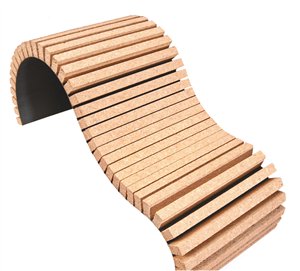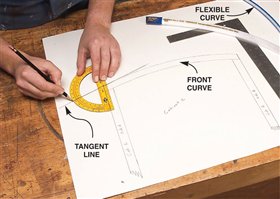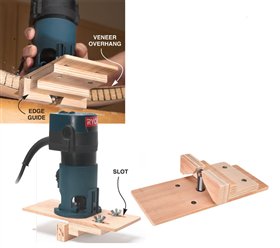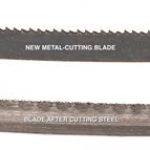We may receive a commission when you use our affiliate links. However, this does not impact our recommendations.
Making Curved Doors
Kerfkore flexible panels
handle curves with ease.
By Brad Holden
|
Curved doors and panels add elegance There are several important tricks and techniques
What is Kerfkore?Kerfkore is a very Kerfkore with paper backer on both sides is also Kerfkore comes in 4-ft. by 8-ft. sheets in 1/4-in., 3/8-in., |
Click any image to view a larger version. Kerfkore flexes Doors made with Kerfkore have |
Pick your veneer
1. Your three main veneer choices are two-ply wood |
Make a full-size drawing
|
Apply the front veneer first
|
Add solid-wood edges for strength, appearance
4. Solid-wood strips provide durable finished edges |
Cut the edges to the required angle
|
Attach the back veneer with yellow wood glue
|
Attach the back veneer with a vacuum press
|
Trim the curved edges
|
Veneer the ends and trim flush
|
SourcesNote: Product availability and prices are subject to change. Kerfkore Co., kerfkore.com, 800-637-3539, Kerfkore, 3/4 in. x 4 ft. x 8 ft. single-sided; 3/4 in. x 4 ft. x 8 ft. doublesided. Roarockit, roarockit.com, 416-938-4588, Thin Air Press kit vacuum press, #01301. This story originally appeared in American Woodworker September 2006, issue #123. |
|
Here are some supplies and tools we find essential in our everyday work around the shop. We may receive a commission from sales referred by our links; however, we have carefully selected these products for their usefulness and quality.























